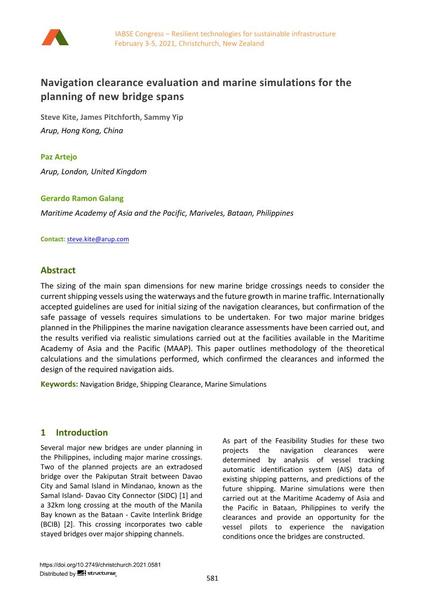Navigation clearance evaluation and marine simulations for the planning of new bridge spans

|
|
|||||||||||
Détails bibliographiques
| Auteur(s): |
Steve Kite
(Arup, Hong Kong, China)
James Pitchforth (Arup, Hong Kong, China) Sammy Yip (Arup, Hong Kong, China) Paz Artejo (Arup, London, United Kingdom) Gerardo Ramon Galang (Maritime Academy of Asia and the Pacific, Mariveles, Bataan, Philippines) |
||||
|---|---|---|---|---|---|
| Médium: | papier de conférence | ||||
| Langue(s): | anglais | ||||
| Conférence: | IABSE Congress: Resilient technologies for sustainable infrastructure, Christchurch, New Zealand, 3-5 February 2021 | ||||
| Publié dans: | IABSE Congress Christchurch 2020 | ||||
|
|||||
| Page(s): | 581-588 | ||||
| Nombre total de pages (du PDF): | 8 | ||||
| DOI: | 10.2749/christchurch.2021.0581 | ||||
| Abstrait: |
The sizing of the main span dimensions for new marine bridge crossings needs to consider the current shipping vessels using the waterways and the future growth in marine traffic. Internationally accepted guidelines are used for initial sizing of the navigation clearances, but confirmation of the safe passage of vessels requires simulations to be undertaken. For two major marine bridges planned in the Philippines the marine navigation clearance assessments have been carried out, and the results verified via realistic simulations carried out at the facilities available in the Maritime Academy of Asia and the Pacific (MAAP). This paper outlines methodology of the theoretical calculations and the simulations performed, which confirmed the clearances and informed the design of the required navigation aids. |
||||
